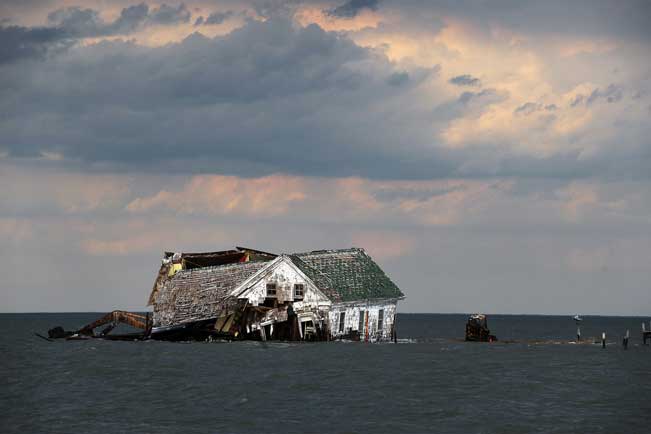From the New York Times by Justin Gilles

The last house on Holland Island in Chesapeake Bay, which once had a population of almost 400, finally toppled in October 2010. As the water rose and the island eroded, it had to be abandoned. Astrid Riecken for The Washington Post, via Getty Images
The little white shack at the water’s edge in Lower Manhattan is unobtrusive — so much so that the tourists strolling the promenade at Battery Park the other day did not give it a second glance.
Up close, though, the roof of the shed behind a Coast Guard building bristled with antennas and other gear. Though not much bigger than a closet, this facility is helping scientists confront one of the great environmental mysteries of the age.
The equipment inside is linked to probes in the water that keep track of the ebb and flow of the tides in New York Harbor, its readings beamed up to a satellite every six minutes.
While the gear today is of the latest type, some kind of tide gauge has been operating at the Battery since the 1850s, by a government office originally founded by Thomas Jefferson. That long data record has become invaluable to scientists grappling with this question: How much has the ocean already risen, and how much more will it go up?
Scientists have spent decades examining all the factors that can influence the rise of the seas, and their research is finally leading to answers. And the more the scientists learn, the more they perceive an enormous risk for the United States.